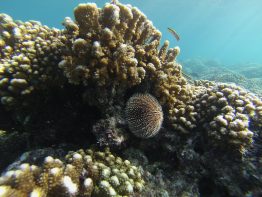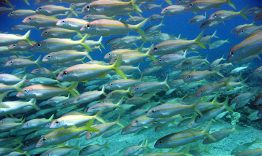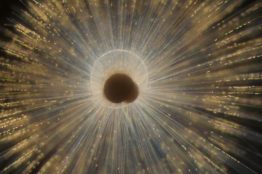While most research in the field focuses on the impact of ocean acidification on individual species, new findings from scientists at the University of Washington, University of British Columbia and their colleagues across the globe shows that OA could drive a cascading loss of biodiversity in some marine habitats.
Read more at UW Today »UW Program on Climate Change Director LuAnne Thompson on being a climate scientist
The College of the Environment’s LuAnne Thompson, a faculty member in the School of Oceanography and the director of the Program on Climate Change, has dedicated her career to researching the ocean’s role in climate variability. Having recently returned from France, where she delved into the specifics of measuring an interpreting sea levels from radar altimetry with her academic peers, Thompson reflects on her feelings about the state of climate science and her hopes for the future of climate science outreach and education.
Read more at Program on Climate Change »2 UW scientists lead effort to craft ‘blueprint’ for holistic fisheries management
Two University of Washington professors are leading an effort to help U.S. fisheries consider the larger marine environment, rather than just a single species, when managing a fishery. Tim Essington, a UW professor of aquatic and fishery sciences, and Phil Levin, a UW professor of practice with the School of Environmental and Forest Sciences and lead scientist at The Nature Conservancy, head a taskforce convened by the Lenfest Ocean Program to guide managers on implementing ecosystem-based fisheries management.
Read more at UW Today »Mislabeled seafood may be more sustainable, new study finds
With seafood, what you see isn’t always what you get. It’s no secret that mislabeling is rampant around the world. Recent studies estimate up to 30 percent of seafood served in restaurants and sold in supermarkets is actually something other than what is listed on the menu or label. Why mislabeling happens is a little squishier. Fraud, human error or marketing ploys — combined with an often multicountry traverse from boat to restaurant — make it possible you are eating a different fish than what’s on the menu.
Read more at UW Today »Nanometer-scale image reveals new details about formation of marine shells
Unseen out in the ocean, countless single-celled organisms grow protective shells to keep them safe as they drift along, living off other tiny marine plants and animals. Taken together, the shells are so plentiful that when they sink they provide one of the best records for the history of ocean chemistry. Oceanographers at the University of Washington, the University of California, Davis and the Pacific Northwest National Laboratory have used modern tools to provide an atomic-scale look at how that shell first forms.
Read more at UW Today »





